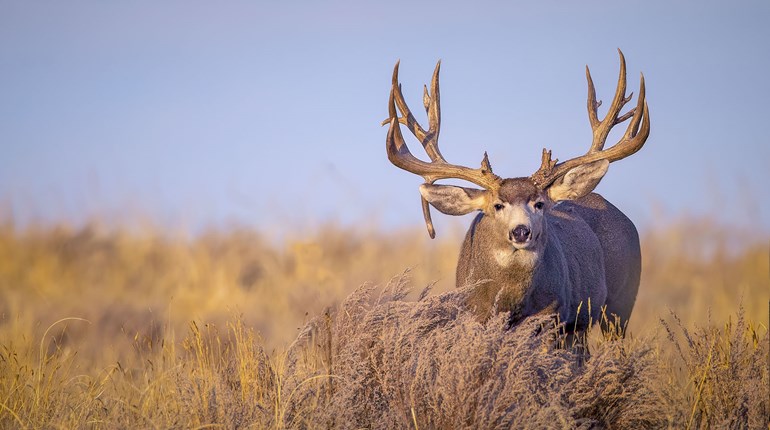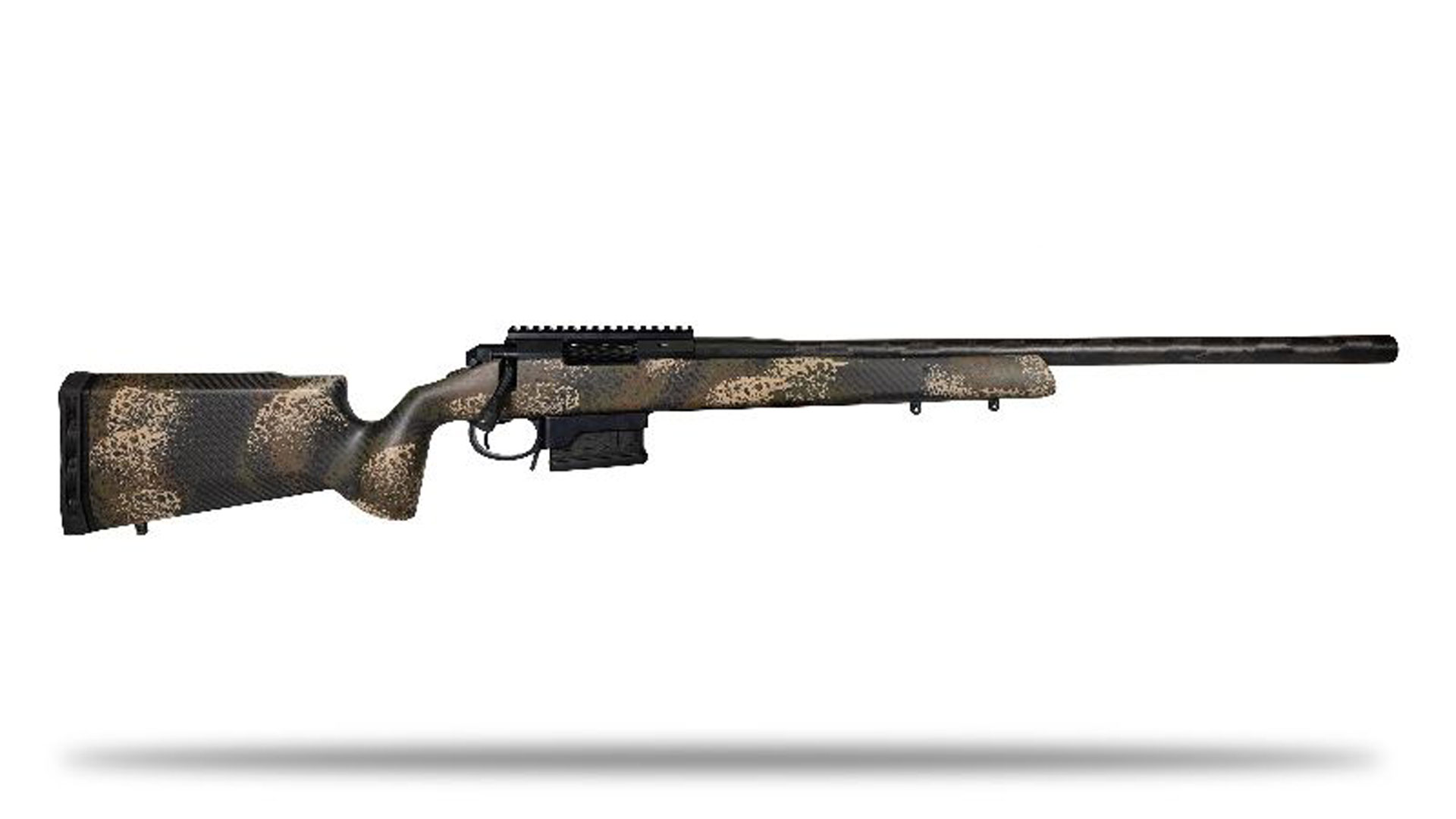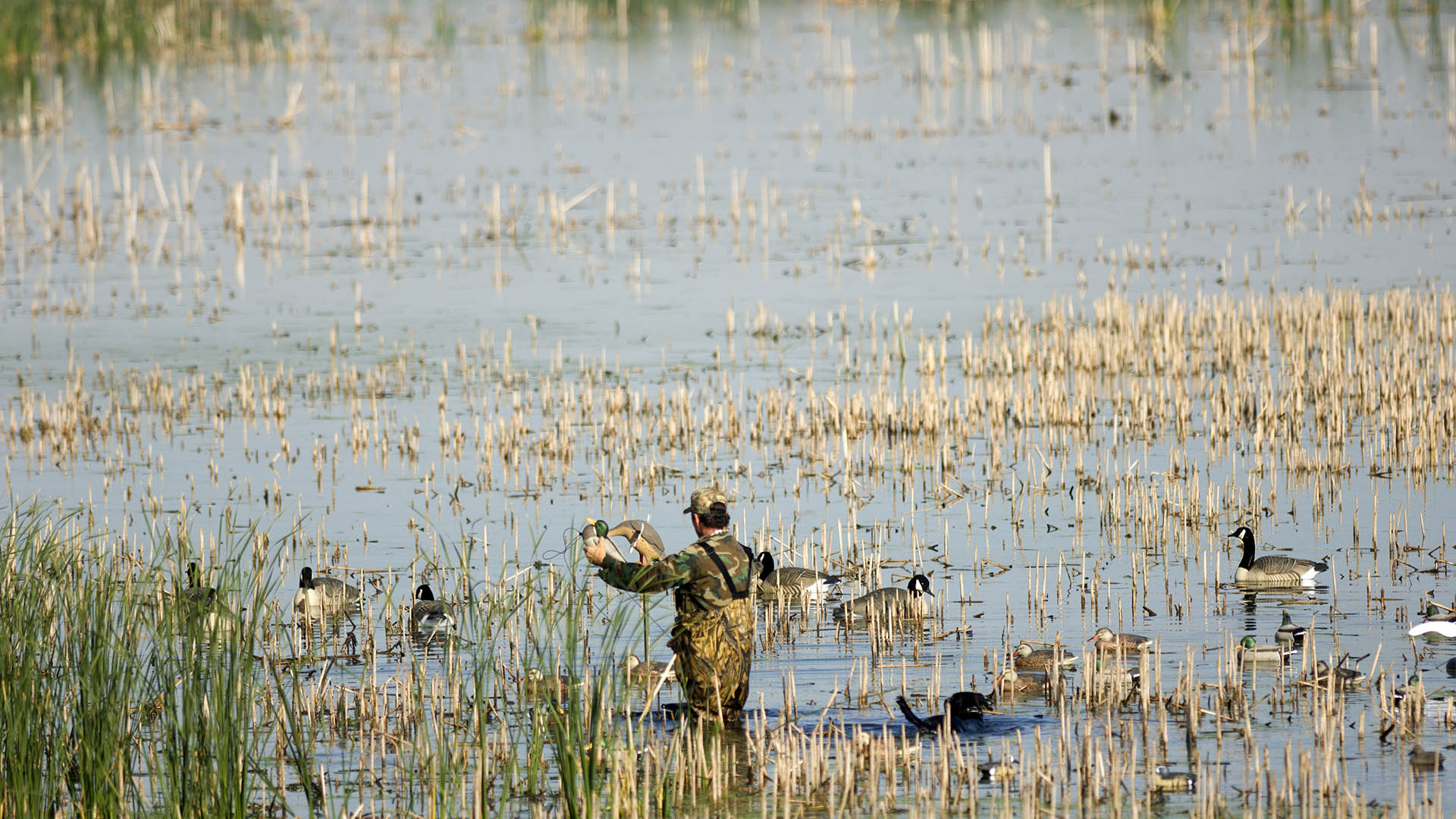
Eighteen inches of fresh snow lay like a huge comforter over the land. I slogged along the freshly plowed highway toward my truck, clouds of horse-breath steam issuing from the sides of my trailer. I unloaded my horses, tightened the cinches and swung aboard, rifle across my back. I had a late-season cow elk tag in my pocket and the fresh sign of a hundred-strong elk herd to follow. This was going to be a good day.
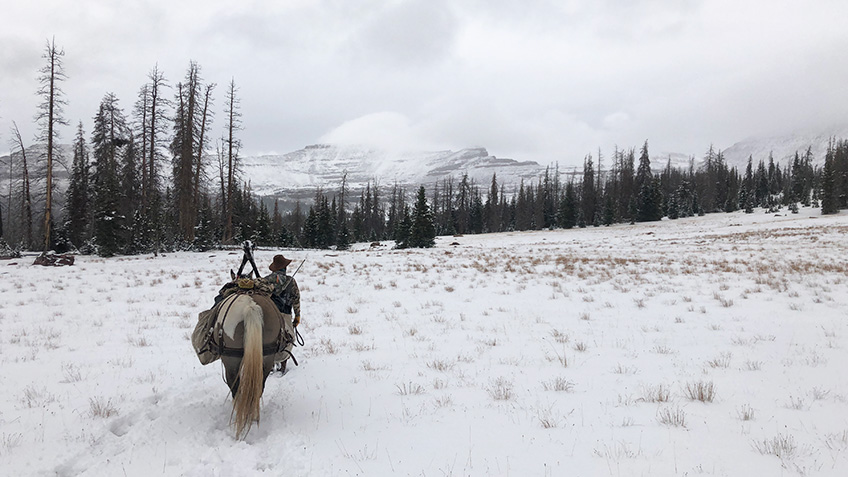
The Perfect Meat Hunt
Many states across elk country offer late-season antlerless elk hunts. Most are on a draw system, but draw odds are reasonable. In my home state of Utah, I can plan on drawing every second year. Additionally, in many states you can buy a landowner tag, or an over-the-counter or leftover permit. With a little research you can find a tag to buy and a place to hunt cow elk every year, often in addition to your bull tag.
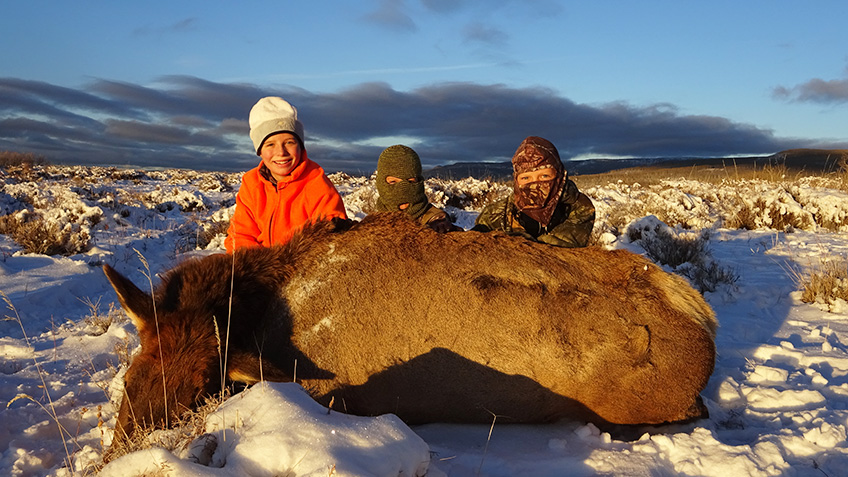
But why hunt cow elk? It’s a fair question. I’m as enamored with hunting big bulls, brown antlers and bugling elk as the next guy, but I also love to eat elk meat. My family almost never buys meat, preferring instead to harvest, process and devour wild game meat, and elk is some of the best. And though a big old bull is great eating as long as it’s processed right, nothing beats a succulent young cow for tender, mild, tasty elk meat.
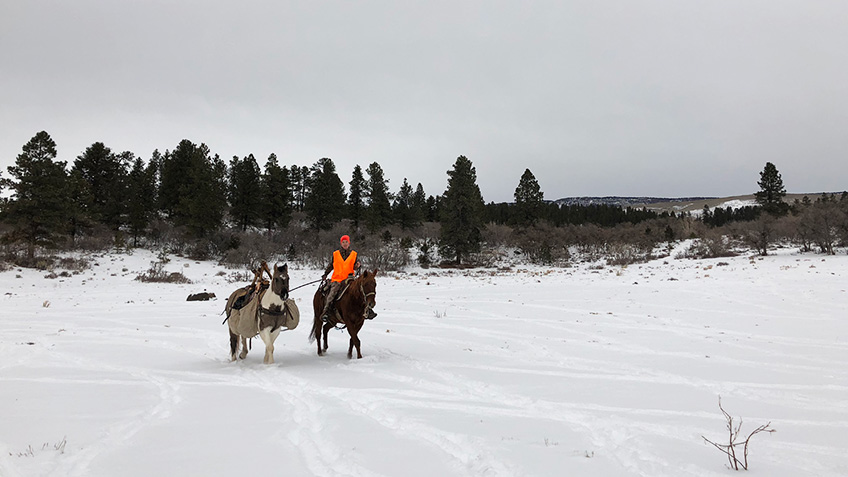
Three Ways to Hunt the Late Season
1. Track Through Snow
My favorite way to hunt late-season cow elk is in fresh snow. Just load your backpack into the truck (or horses into the trailer), stow your rifle behind the seat and drive through elk winter range until you spot elk tracks crossing the road, or glass up tracks on a far hillside with your binocular. Then shoulder your pack and rifle, or mount your horse (I like to lead a packhorse in case I make a kill), and follow the elk tracks through the snow. Pay close attention to the mood of the herd; so long as they are traveling, you can move out, too. But when they start to browse, meander around and leave droppings and yellow snow, slow down. Stalk along their path until you spot them. Then pick out a young, fat-looking one, steady your rifle and make meat.
2. Glass South-Facing Slopes
Elk need plenty of feed when the mercury drops in the high country. South-facing slopes blow and melt free of snow faster than anywhere else, and the elk know it. Find a vantage point or drive along roads that enable you to cover miles of good winter range—especially south-facing slopes—at a time. Eventually you’ll spot elk. Gather your gear, plan your approach and make your stalk. If the herd is up and feeding, be very careful; there will be a lot of suspicious eyes looking for trouble just like you. If they’re bedded, they’ll be a bit more relaxed, but you’ll still need to stalk carefully.
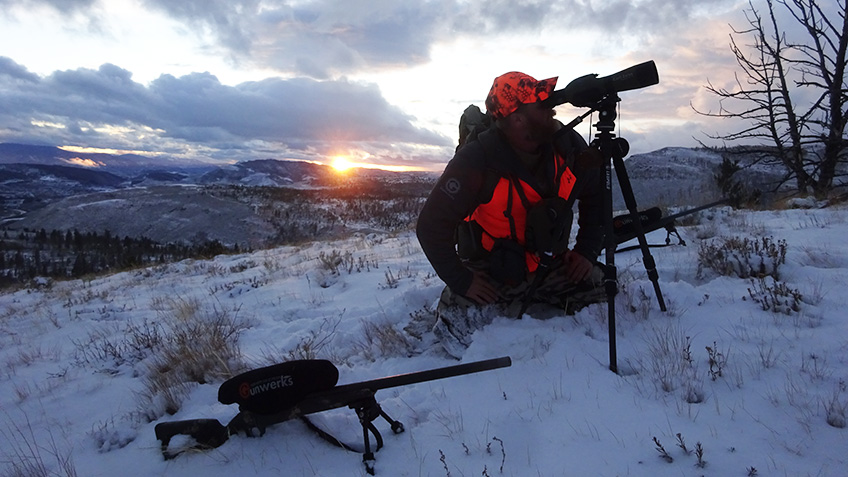
3. Watch Meadows and Fields
In some elk territory there are no good south-facing slopes, and no good roads through winter range to drive along looking for tracks, it’s just vast forest. The best way to hunt these areas is to find meadows in the timber—even little ones—with elk tracks and sign in them. Learn which way the prevailing wind blows in the evening, and set up just inside the trees on the downwind side of the meadow. Let the elk come to you. It can get darn cold sitting in the late-season elk woods, though, so dress for the weather. Elk will scrutinize the meadow carefully before entering; don’t move much once you’re set up and in position.
If your hunting area includes private pastures and hayfields, you can employ a similar strategy. Elk love to graze in them, and often cause a ton of damage to fences and haystacks. A polite and respectful visit to the landowner just might result in permission to hunt his fields. That’s a veritable gold mine of elk hunting; just set up on the fields in the evening, and to cover the elk’s exit route in the morning.
TIP: Carry a cow call. I can’t count the times I’ve changed a blown opportunity into a shot opportunity simply by making a couple cow chirps or mews. Elk, unless badly spooked, will stop to look toward the call. That’s your chance. They won’t stand for long, so don’t waste time. Just get steady, squeeze the trigger and go claim your winter’s meat.
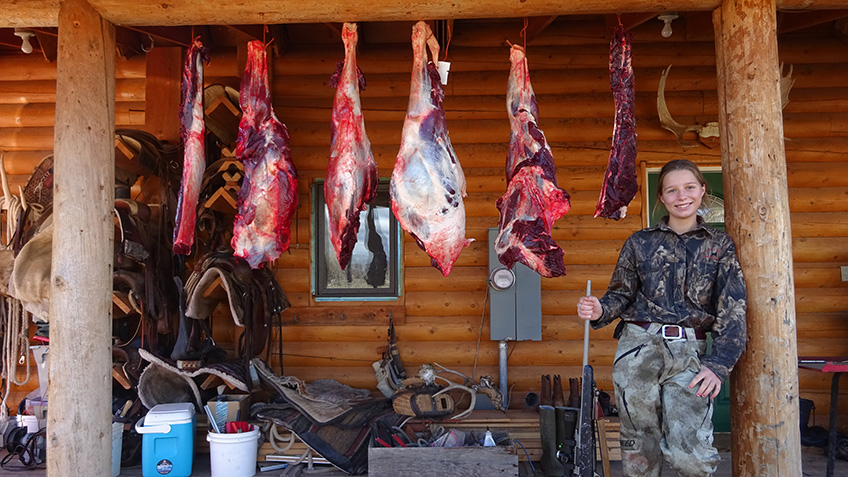
Process Your Elk
Okay, what now? If you’ve never processed an elk before, the task can seem insurmountable, but it’s not. Here’s what you do to convert your elk into some of the finest eating on earth:
• Don’t gut it. Unless you can drive right to the animal and have a half-dozen stout hunting buddies with you to help throw it in the truck, just use the gutless method. Skin the top half of the elk, remove the front and rear quarters from the ribcage and pelvis, and filet the backstrap, neck meat and trim meat free of the carcass. Then turn the elk over and repeat. Once you’re all done, open the flank and reach in for the tenderloins. If you want the heart and liver, now’s the time to pull out the entrails and collect them.
• As the quarters come free, hang them from a tree limb with paracord. If there is at least 10 inches of snow on the ground you can lay them in the snow to cool—temporarily. Don’t leave them for more than an hour or so, because they will melt through the snow and glue to all the dirt and debris underneath. Bag the backstraps and other trim meat in meat sacks.
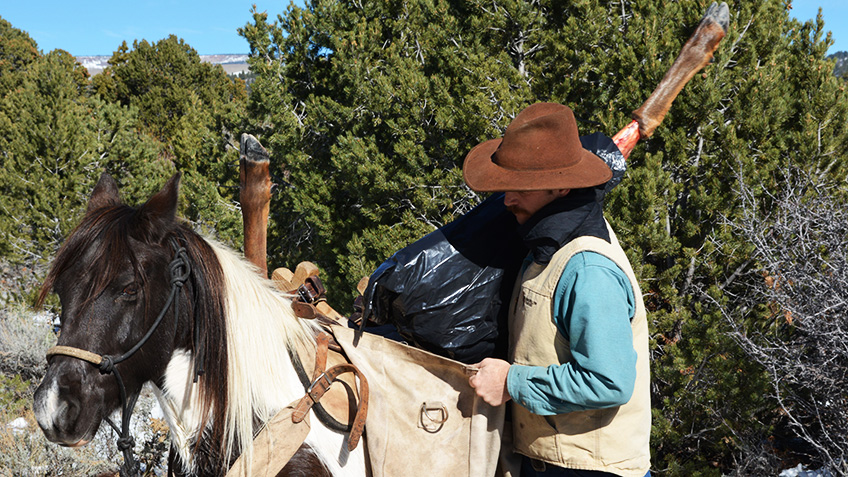
Tip: Before packing out, slide everything—each quarter, and each trim meat sack—into heavy-duty trash bags. It’ll keep your backpack or pack panniers clean and free of blood. Don’t worry about the plastic causing the meat to spoil; it’s much too cold during the late season for that.
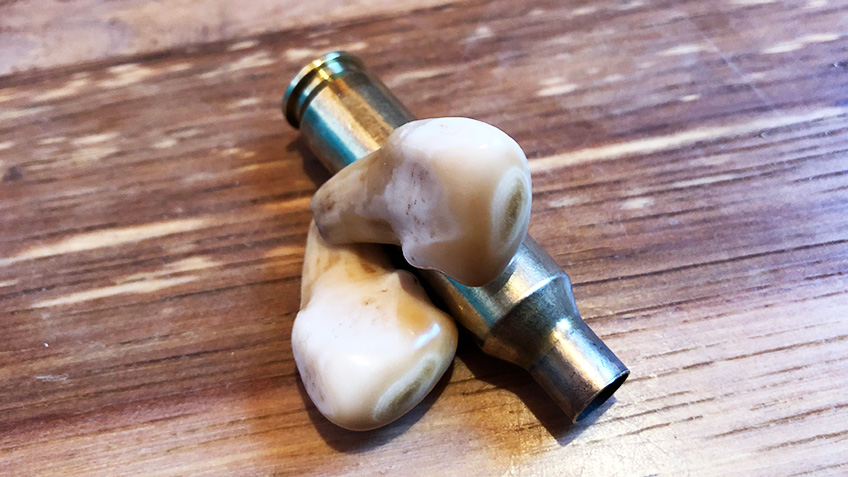
Remember the Ivory
Cow elk don’t have huge, caramel-swirled ivories like big bulls do, but the ivories are still beautiful mementos of wild times in wild places. Carefully remove them with the long point of a sharp knife. Don’t use pliers, just work around and around with your knife until the tooth comes free. Drop them in your pocket; you can clean them up later when the fire is crackling in the hearth and you’re wishing you were back in the high country, watching your frosty breath drift away on the wind and hunting elk.
Want to read more from Aram von Benedikt? Check out the following articles:
• Backcountry Survival Tips: How to Deal with Disaster
• DIY Backcountry Hunting Tactics and Gear
• How to Be an Ethical Long-Range Hunter
• Tips and Tactics for Hunting Coues Deer
• Essential Stalking and Still-Hunting Skills
• A Beginner's Guide to Traditional Bowhunting
• 6.5 Creedmoor Proven: How Does It Actually Perform on Big Game?
• How Hunting Rifles & Gear Have Evolved Over the Last 50 Years
• How to Sharpen a Knife
• How to Set Up Your Rifle and Scope for Long-Range Dialing
• 7 Common Predator Hunting Mistakes to Avoid
• 6 Tips for Hunting Public-Land Mule Deer
• 10 Tips for Bowhunting Elk
• Tips and Tactics for Bowhunting Mule Deer
• How Do You Build the Ultimate Western Big-Game Rifle?
• 10 Ways to Prep for Your Next Western Big-Game Hunt
• Tips and Tactics for Hunting Canyon-Country Gobblers
• 12 Tips for Shed Hunting the West












